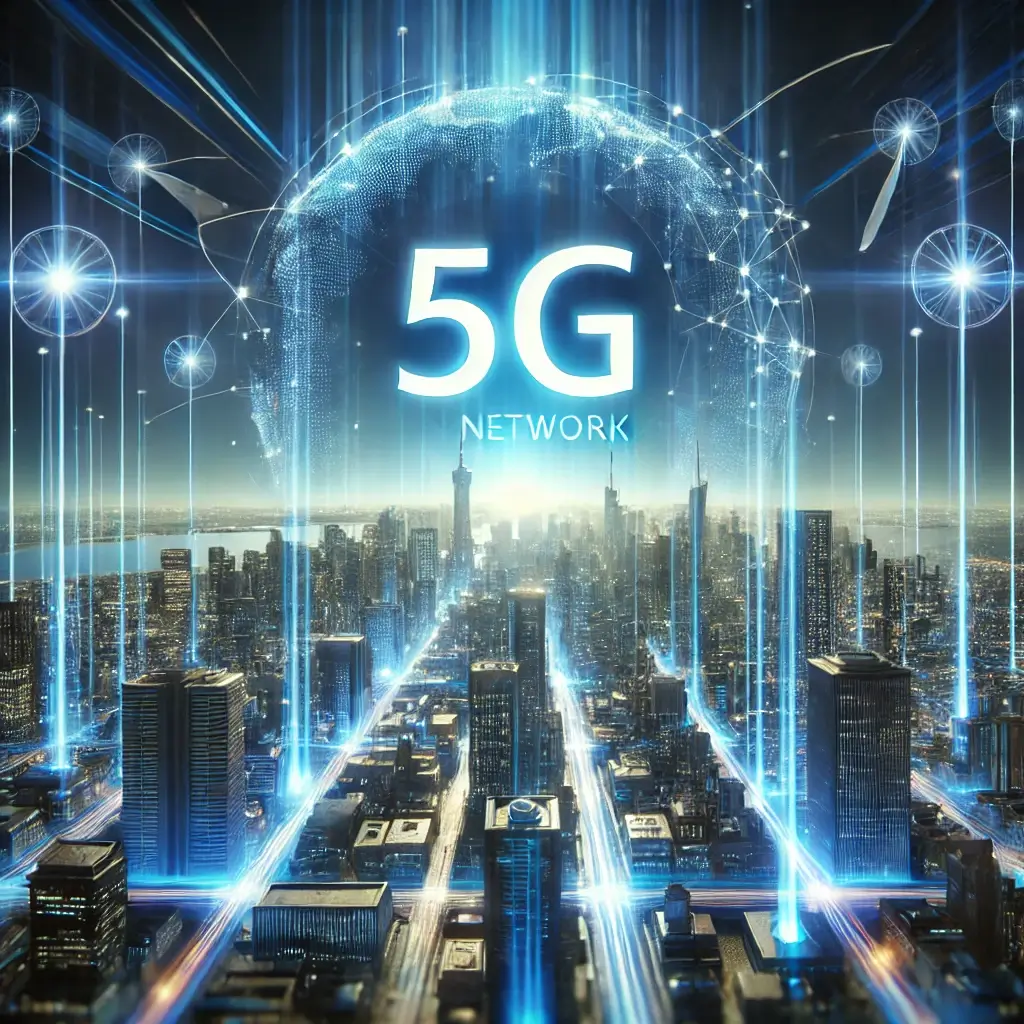Last Updated on March 20, 2025

Introduction
The world of wireless connectivity is evolving rapidly, and 5G mobile data is leading the charge. As the fifth-generation wireless standard, 5G technology brings blazing-fast speeds, near-instant response times, and massive network capacity. But what sets it apart from previous generations? And how does it impact our everyday digital experience?
In this article, we’ll explore how 5G works, its benefits, challenges, and its exciting future.
What Is 5G?
The Evolution of Mobile Networks
Before diving into 5G mobile data, let’s take a quick look at its predecessors:
- 1G (1980s) – The first analog mobile networks, enabling voice-only calls.
- 2G (1990s) – Introduced digital voice calling and text messaging.
- 3G (2000s) – Enabled mobile internet browsing and video calling.
- 4G LTE (2010s) – Brought faster wireless data, high-definition streaming, and better reliability.
- 5G (2020s and beyond) – A game-changer for ultra-fast speeds, real-time responsiveness, and massive connectivity.
How 5G Differs From Previous Generations
Unlike 4G LTE, which primarily focuses on improving mobile broadband speeds, 5G is designed for a broader range of applications, including autonomous vehicles, industrial automation, smart cities, and the Internet of Things (IoT). The improvements in speed, latency, and capacity make it a revolutionary leap in mobile communication.
Core Technologies Behind 5G
To deliver its impressive performance, 5G technology relies on several key innovations:
Spectrum Usage
5G operates across three frequency bands:
- Low-band (Sub-1 GHz): Offers wide coverage but lower speeds.
- Mid-band (1–6 GHz): Balances speed and coverage.
- Millimeter-wave (24 GHz and above): Delivers ultra-fast speeds but has limited range.
Read more about 5G spectrum from IEEE
Small Cells and Massive MIMO
- Small Cells: Mini base stations that enhance network coverage and efficiency in high-traffic areas.
- Massive MIMO (Multiple Input, Multiple Output): Uses multiple antennas to improve signal strength and speed.
Beamforming & Edge Computing
- Beamforming: Directs signals to specific users for better reliability.
- Edge Computing: Reduces latency by processing data closer to the user.
Network Slicing
Network slicing allows operators to create multiple virtual networks within a single 5G infrastructure, optimizing performance for specific applications like gaming, autonomous vehicles, and industrial automation.
Benefits of 5G Mobile Data
Faster Download & Upload Speeds
5G networks can reach speeds of up to 10 Gbps, significantly surpassing 4G’s average of 100 Mbps.
Lower Latency
With latency reduced to 1 millisecond (ms) or less, 5G enables real-time interactions, which is crucial for applications like gaming, remote surgery, and autonomous driving.
Increased Network Capacity
5G technology supports millions of connected devices per square kilometer, making it ideal for IoT applications in smart cities and industrial automation.
Energy Efficiency
5G networks are designed to be more energy-efficient, reducing power consumption and improving sustainability in mobile communications.
Real-World Applications & Use Cases
The impact of 5G mobile data extends across multiple industries:
Autonomous Vehicles
With low latency and real-time data transmission, 5G enables self-driving cars to communicate instantly with other vehicles and infrastructure, enhancing road safety.
Telemedicine & Remote Surgeries
High-speed connectivity ensures seamless video consultations and even allows remote-controlled robotic surgeries in hospitals worldwide.
Smart Cities
From traffic management to energy-efficient buildings, 5G technology powers interconnected city infrastructure for smarter urban planning.
Learn more about 5G applications from GSMA
Augmented Reality (AR) & Virtual Reality (VR)
The mobile data revolution enhances AR/VR experiences, paving the way for immersive gaming, training simulations, and virtual tourism.
Industrial IoT
Factories and supply chains leverage 5G’s faster wireless data to enable real-time automation and predictive maintenance.
Smart Homes & Consumer Devices
5G enhances home automation, improving the performance of smart home devices like voice assistants, security cameras, and connected appliances.
Challenges & Concerns
Infrastructure Costs & Deployment
Building 5G networks requires significant investments in small cells, fiber optics, and spectrum licensing, leading to slow adoption in some regions.
Coverage Limitations
Millimeter-wave 5G delivers exceptional speeds but struggles with range and penetration through buildings, requiring dense deployment of small cells.
Device Compatibility
Not all smartphones and IoT devices support 5G mobile data yet, requiring hardware upgrades for widespread adoption.
Health & Privacy Concerns
While extensive research suggests 5G technology is safe, some concerns remain about radiation exposure and increased data collection risks.
Global Rollout & Major Players
Leading Telecom Providers
Key players in the 5G mobile data industry include:
- Verizon, AT&T, T-Mobile (USA)
- Vodafone, BT, Deutsche Telekom (Europe)
- China Mobile, Huawei, Samsung (Asia)
Explore global 5G deployment insights from 3GPP
Countries Leading 5G Adoption
- South Korea & China: Among the fastest adopters with nationwide 5G deployment.
- USA & Europe: Rapid expansion but with varying coverage levels.
- India & Latin America: Gradual adoption with growing infrastructure investments.
The Future of 5G and Beyond
5G Advanced & 6G Research
- 5G Advanced (2025–2030): Enhancements in AI-driven networks, improved security, and energy efficiency.
- 6G (Beyond 2030): Expected to deliver terabit speeds and holographic communication.
Ongoing Innovations
- Satellite-based 5G for global coverage.
- AI-driven network optimization to enhance efficiency.
- Quantum communication integration for ultra-secure transmissions.
Conclusion
5G mobile data is revolutionizing wireless connectivity, bringing high-speed connectivity, low latency, and massive network capacity. With applications spanning autonomous driving, telemedicine, smart cities, and IoT, the future of 5G networks is incredibly promising.
As global adoption accelerates, businesses and consumers alike should prepare for a more connected and data-driven world. Whether you’re an everyday user or a tech enthusiast, 5G technology is set to redefine the way we interact with the digital world.